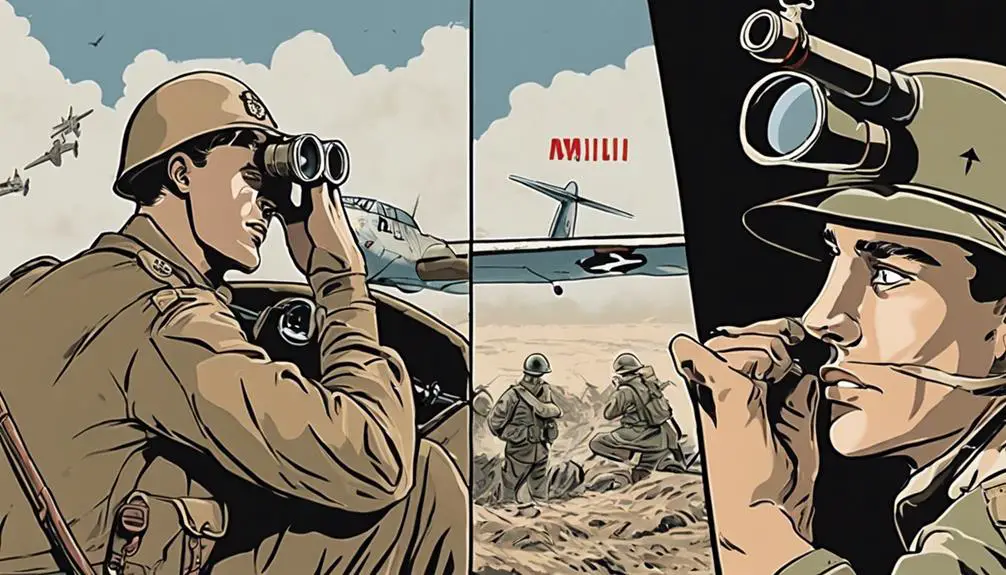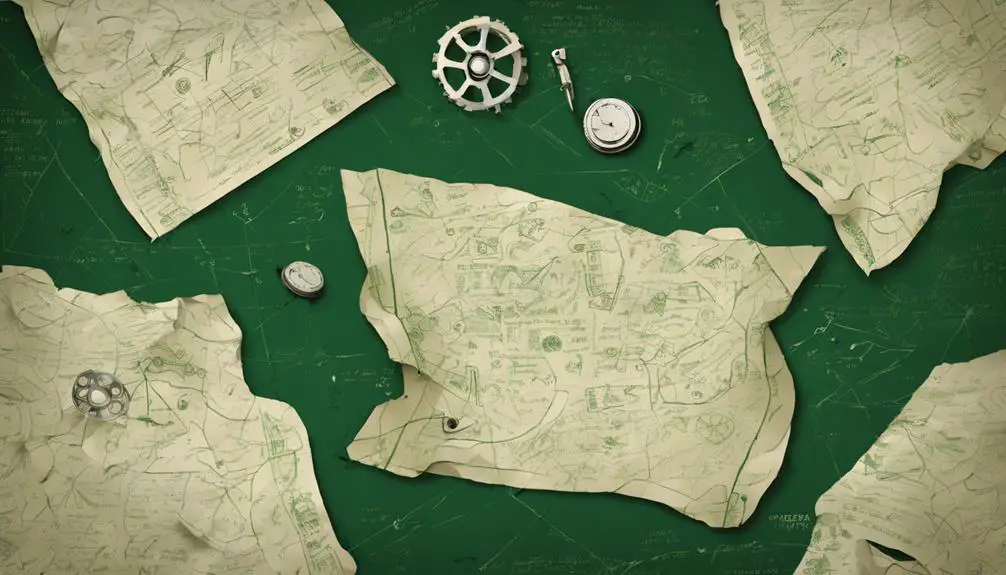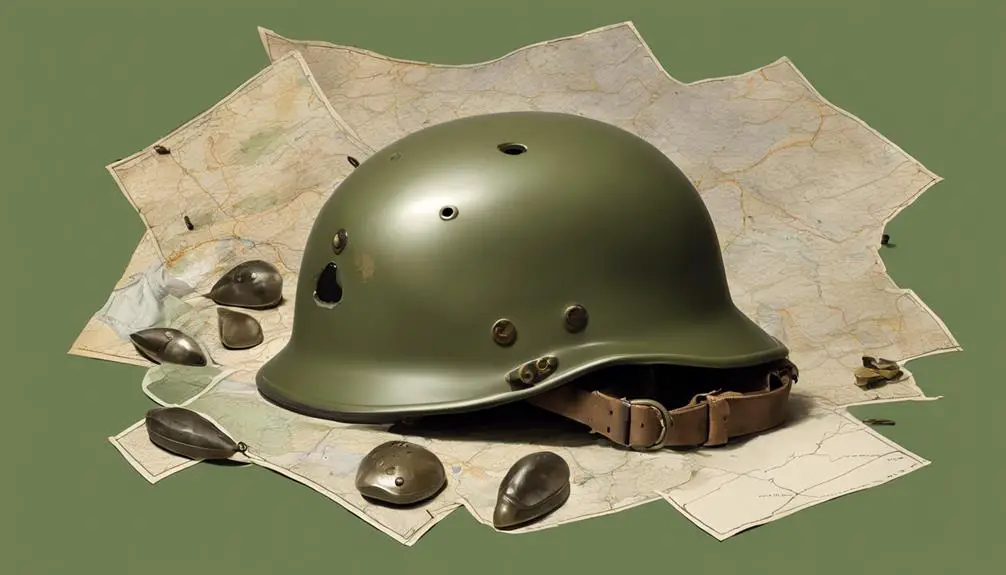You're familiar with the term 'bogey' in military slang, but do you know its origins? The term emerged during World War II, coined by British radar operators to convey uncertainty in aerial surveillance. Today, it's a critical communication tool for identifying unknown aircraft and evaluating threats in real-time. In modern warfare, 'bogey' is more than just a slang term – it's a matter of life and death. As you explore the world of military jargon, you'll discover how this term has evolved, and how it's used in conjunction with advanced identification systems to facilitate rapid decision-making in high-pressure situations.
Origins of Bogey Slang

Your exploration of the origins of Bogey slang begins with World War II, when British radar operators coined the term 'bogey' to describe unidentified aircraft. This etymology is widely accepted, but debates persist regarding the term's precise origins.
Some historians argue that the term emerged from the Royal Air Force's (RAF) initial uncertainty about the identity of incoming aircraft, while others propose that it came from the RAF's slang term for a mysterious or unknown entity.
In the historical context of World War II, the term 'bogey' served as an important communication tool for radar operators to convey uncertainty about incoming aircraft. This context is essential in understanding the term's evolution, as it highlights the urgency and uncertainty of wartime radar operations.
Amidst the chaos of war, the term 'bogey' became an integral part of the military lexicon, allowing operators to quickly convey critical information about unidentified aircraft. By examining the etymology debates and historical context surrounding the term 'bogey,' you gain insight into the complex and dynamic nature of military slang.
Airborne Threat Detection
As radar operators relied on the term 'bogey' to convey uncertainty, they simultaneously developed and refined airborne threat detection protocols to quickly identify and respond to potential threats.
You're likely familiar with the concept of radar systems, which play a pivotal role in detecting and tracking airborne objects. In the context of airborne threat detection, radar systems are vital in providing early warning systems for identifying potential threats.
Aerial surveillance, in particular, is a critical component of airborne threat detection, as it enables the monitoring of aerial activity to identify and respond to potential threats.
When it comes to airborne threat detection, speed and accuracy are essential. Radar systems are designed to detect and track airborne objects, providing critical information on speed, direction, and altitude. This information is then used to assess the level of threat posed by the detected object.
Identifying Friend or Foe

In the heat of battle, distinguishing friend from foe is a matter of life and death, and military personnel rely on advanced identification systems to swiftly and accurately classify airborne objects as friendly or hostile. You're heavily reliant on situational awareness, combining data from multiple sources to paint a detailed picture of the battlefield. This includes tracking enemy radar signals, monitoring radio communications, and analyzing visual cues to identify potential threats.
When an unknown aircraft appears on your radar, you must quickly determine whether it's a friendly or enemy plane. You'll cross-reference the aircraft's identification friend or foe (IFF) transponder code with a database of known friendly aircraft. If the code doesn't match, you'll escalate the situation, gathering more data to confirm the aircraft's intentions.
Your training and experience will guide you in making rapid, accurate assessments, as hesitation can be deadly. By staying vigilant and leveraging advanced identification systems, you'll maintain a decisive edge in combat, protecting yourself and your comrades from harm.
Slang in Modern Warfare
Military jargon, long a hallmark of warrior culture, has evolved in modern warfare to include a lexicon of slang terms that facilitate rapid communication on the battlefield. As you navigate the complexities of modern warfare, you'll encounter a unique dialect that's distinct from traditional military language. This Warzone Jargon has become an essential component of operational success, allowing troops to convey critical information swiftly and accurately.
In the digital domain, Cyber slang has emerged as a critical component of cybersecurity operations. You'll hear terms like 'spear phishing' and 'zero-day exploit' being tossed around in discussions about cyber threats. These colloquialisms enable cybersecurity professionals to quickly identify and respond to emerging threats in real-time.
In both physical and virtual warzones, slang terms have become indispensable tools for facilitating rapid communication and situational awareness. By embracing this linguistic evolution, you'll be better equipped to operate effectively in the fast-paced, high-stakes environment of modern warfare.
Deciphering Code Names

Your mission briefing includes cryptic code names that require deciphering to uncover their true meaning. As you investigate the world of military slang, you'll encounter a plethora of codes that need to be decoded.
Code cracking, an essential aspect of crypto analysis, involves deciphering encrypted messages to extract valuable intel. In the domain of military communications, code names are used to conceal sensitive information from prying eyes. To decipher these codes, you'll need to employ cryptographic techniques, such as frequency analysis and pattern recognition.
As you analyze the code names, look for patterns, anomalies, and correlations. Identify common prefixes, suffixes, and roots to uncover hidden meanings. Remember, crypto analysis is a meticulous process that requires attention to detail and a logical mind.
By cracking the code, you'll gain a deeper understanding of the military's communication strategies and uncover the true meaning behind the cryptic code names.
Evolution of Military Lingo
As you explore the world of military slang, you'll discover that its evolution is deeply rooted in the need for efficient communication, with each era and conflict leaving its unique mark on the language.
This linguistic adaptation has been driven by the imperative to convey complex information quickly and accurately, often in high-pressure situations.
The cultural significance of military slang lies in its ability to foster a sense of community and shared experience among service members. Additionally, it has played an important role in shaping the identity of military personnel, serving as a badge of honor and a symbol of camaraderie.
Throughout history, military slang has undergone significant changes, reflecting the social, cultural, and technological advancements of each era. From the trench slang of World War I to the modern-day jargon of special operations forces, each generation has contributed to the rich tapestry of military language.
Lost in Translation

When you're immersed in a foreign environment, surrounded by unfamiliar sounds and phrases, the nuances of military slang can quickly become a source of confusion, leading to misunderstandings and miscommunications. Cultural barriers and language hurdles can impede effective communication, making it challenging to grasp the subtleties of military lingo.
| Military Slang | Meaning |
|---|---|
| 'Hooah' | Expression of excitement or approval |
| 'Bogey' | Enemy aircraft |
| 'SITREP' | Situation Report |
| 'ROE' | Rules of Engagement |
| 'FOB' | Forward Operating Base |
As you navigate the complexities of military communication, it's important to recognize the potential pitfalls of language hurdles. Misunderstandings can have serious consequences, particularly in high-stress environments. By being aware of these cultural barriers and language hurdles, you can take steps to mitigate their impact and ensure effective communication.
Frequently Asked Questions
Can Civilians Use Military Slang in Everyday Conversations?
You might wonder, can civilians use military slang in everyday conversations?
While it's tempting to adopt trendy phrases, consider the potential implications of cultural appropriation.
Language evolution is a natural process, but borrowing terms without understanding their original context can be problematic.
Before incorporating military slang into your vocabulary, take a step back and acknowledge its origins.
Be respectful of the cultural heritage and avoid using terms that might be deemed insensitive or disrespectful.
Are All Military Slang Terms Officially Recognized by the Government?
'When in Rome, do as the Romans do,' but when it comes to military slang, the government doesn't officially recognize all terms.
You'll find that slang origins are often informal and emerge from military culture. While some terms are widely accepted, others remain unofficial.
The military lexicon is vast, and not all slang is formally recognized or documented. As you explore the world of military slang, keep in mind that not everything is officially sanctioned.
Do Different Military Branches Have Unique Slang Terms?
You might wonder if different military branches have unique slang terms. The answer is yes. Each branch has its own distinct dialect, often shaped by their specific roles and histories.
For instance, the Navy has 'deck ape' for a sailor who works on deck, while the Army has 'grunt' for an infantry soldier. These branch dialects, or service lingo, reflect the distinct cultures and traditions within each branch, setting them apart from one another.
Are Military Slang Terms Used in Other Languages?
As you venture into the domain of military communication, you'll encounter a fascinating phenomenon. Are military slang terms used in other languages?
The answer lies beyond linguistic barriers. In a global vernacular, military slang transcends language, adapting to local dialects.
You'll find that terms like 'HOOAH' (US Army) and 'Oorah' (US Marines) have counterparts in other languages, facilitating cross-cultural understanding among international forces.
Can Military Slang Be Used to Conceal Secret Messages?
You're wondering if military slang can be used to conceal secret messages. Essentially, this concept is rooted in crypto communications, where coded language is used to secure messaging.
By utilizing slang terms, messages can be disguised, making it challenging for unauthorized parties to decipher their meaning. This technique can be particularly effective in secure messaging, where confidentiality is paramount.
However, it's important to note that this method isn't foolproof and can be vulnerable to cryptanalysis.
Conclusion
As you explore the world of military slang, you'll uncover a complex web of codes and terminology.
Did you know that the term 'bogey' is used to identify an unidentified airborne target, with over 90% of these targets ultimately being identified as friendly forces?
This staggering statistic highlights the importance of effective communication in high-stakes situations.
As military lingo continues to evolve, understanding the nuances of terms like 'bogey' remains essential for success in modern warfare.







